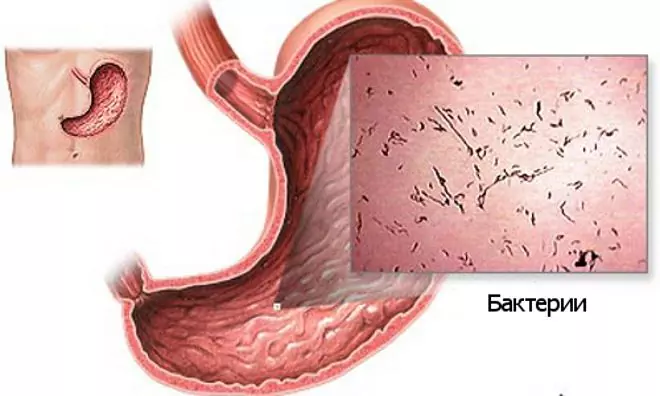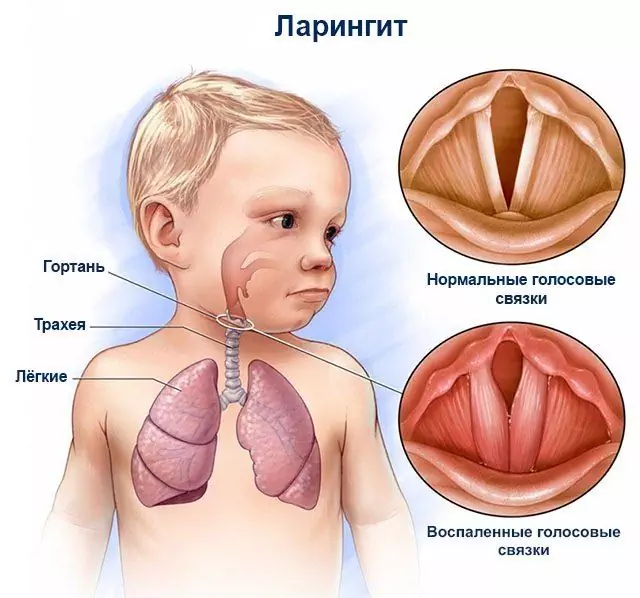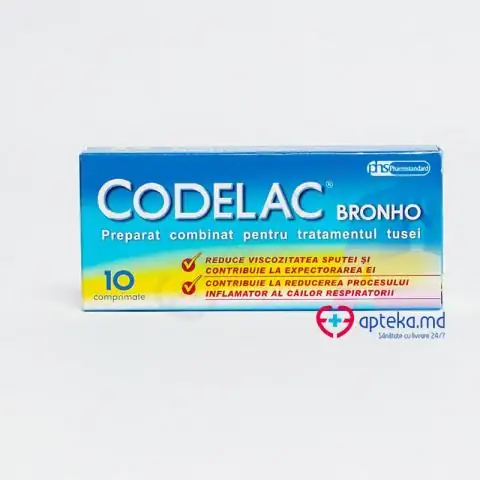- Author Rachel Wainwright [email protected].
- Public 2023-12-15 07:39.
- Last modified 2025-11-02 20:14.
Vibrocil
Vibrocil: instructions for use and reviews
- 1. Release form and composition
- 2. Pharmacological properties
- 3. Indications for use
- 4. Contraindications
- 5. Method of application and dosage
- 6. Side effects
- 7. Overdose
- 8. Special instructions
- 9. Use in childhood
- 10. Drug interactions
- 11. Analogs
- 12. Terms and conditions of storage
- 13. Terms of dispensing from pharmacies
- 14. Reviews
- 15. Price in pharmacies
Latin name: Vibrocil
ATX code: R01BA53
Active ingredient: dimetindene + phenylephrine (dimetindene + phenylephrine)
Manufacturer: Novartis Consumer Health (Switzerland)
Description and photo update: 2019-16-08
Prices in pharmacies: from 261 rubles.
Buy

Vibrocil is a combined drug with antiallergic and vasoconstrictor action, used in the treatment of rhinitis.
Release form and composition
Vibrocil is available in three dosage forms:
- Nasal drops: from colorless to slightly yellow, transparent solution with a faint lavender smell (15 ml each in dark glass vials with a screw-on pipette cap, 1 bottle each in a cardboard box);
- Nasal spray: from colorless to slightly yellow, transparent solution with a faint lavender smell (10 ml each in low density polyethylene bottles with a spray and a screw cap with a first opening control system, 1 bottle in a cardboard box);
- Nasal gel: from colorless to slightly yellow in color, homogeneous, without foreign mechanical particles, with a faint lavender smell (12 g each in aluminum tubes with a plastic cap and tip, 1 tube each in a cardboard box).
The composition of 1 ml of drops and spray and 1 g of gel contains active substances:
- Phenylephrine - 2.5 mg;
- Dimethindene maleate - 0.25 mg.
Auxiliary components that make up the drops: sorbitol - 35 mg; 50% solution of benzalkonium chloride (in terms of benzalkonium chloride) - 0.2 mg (0.1 mg); sodium hydrogen phosphate - 4.4 mg; citric acid monohydrate - 2.6 mg; lavender oil - 0.2 mg; purified water - up to 1 ml.
Auxiliary components that make up the spray: sorbitol - 35 mg; sodium hydrogen phosphate - 4.4 mg; citric acid monohydrate - 2.6 mg; lavender oil - 0.2 mg; 50% solution of benzalkonium chloride (benzalkonium chloride) - 0.2 mg (0.1 mg); purified water - up to 1 ml.
Auxiliary components that make up the gel: lavender oil - 0.2 mg; anhydrous sodium hydrogen phosphate - 4.4 mg; citric acid monohydrate - 2.6 mg; hypromellose - 20 mg; sorbitol - 35 mg; 50% solution of benzalkonium chloride (in terms of dry matter) - 0.2 mg (0.1 mg); purified water - 935 mg.
Pharmacological properties
Pharmacodynamics
Phenylephrine belongs to the group of sympathomimetics and, in the case of topical application, is characterized by a moderate vasoconstrictor effect due to the stimulation of alpha 1 -adrenergic receptors localized in the venous vessels of the nasal mucosa. This effect ensures the elimination of swelling of the nasal mucosa and its paranasal sinuses.
Dimethindene has antiallergic properties, being an antagonist of histamine H 1 receptors. At the same time, there is no decrease in the activity of the ciliated epithelium of the nasal mucosa.
Pharmacokinetics
Vibrocil is designed exclusively for local use, therefore its active components practically do not enter the systemic circulation, and its activity is not determined by the concentration of dimetindene and phenylephrine in the blood plasma.
Indications for use
- Vasomotor and chronic rhinitis;
- Allergic rhinitis (including that arising from hay fever);
- Acute rhinitis, including a runny nose for colds;
- Chronic and acute sinusitis;
- Acute otitis media (along with other drugs).
Vibrocil is also used in preparation for surgical interventions in the nasal area and to eliminate edema of the mucous membrane of the paranasal sinuses and nose after operations in this area.
Contraindications
The following contraindications are common to all dosage forms:
- Atrophic rhinitis (with fetid discharge - ozena, inclusive);
- Simultaneous reception with MAO inhibitors, as well as earlier than 14 days after the end of their use;
- Hypersensitivity to drug components.
Vibrocil spray and gel are contraindicated for children under 6 years of age.
Due to the possible systemic vasoconstrictor effect of phenylephrine, the drug is not recommended for use during breastfeeding and during pregnancy.
According to the instructions, Vibrocil should be used with caution in the following diseases:
- Closed-angle glaucoma;
- Diseases of the thyroid gland;
- Cardiovascular diseases (generalized atherosclerosis, arrhythmias, arterial hypertension);
- Insulin-dependent diabetes mellitus;
- Prostate adenoma.
As with the use of any local vasoconstrictor drugs, care must be taken when prescribing the drug to patients who have severe reactions to sympathomimetics (for example, with the development of dizziness and insomnia).
Instructions for the use of Vibrocil: method and dosage
Vibrocil is used intranasally. Before administering the drug, you need to clean the nasal passages.
A single dose for children from 6 years old and adults is usually 3-4 drops or 1-2 sprays in each nasal passage. Frequency rate of application - 3-4 times a day.
Children under 6 years of age can use the drug only in the form of Vibrocil drops:
- Up to 1 year - 1 drop each;
- 1-6 years old - 1-2 drops.
Frequency rate of application - 3-4 times a day.
Vibrocil drops are instilled with the head thrown back. This head position should be maintained for several minutes after the procedure.
When using a spray, the spray should be held vertically, tip up. The tip is inserted into the nasal passage. Keeping the head straight, the nebulizer is squeezed once with a short, sharp motion and unclenched by removing the tip from the nose. It is recommended to inhale slightly through the nose while spraying.
The gel should be applied 3-4 times a day as deep as possible into each nasal passage. The last application is recommended shortly before bedtime. This will ensure the effect throughout the night.
Side effects
When using Vibrocil, side effects develop infrequently in the form of transient and mild local reactions from the nasal mucosa (dryness or burning sensation).
Overdose
An overdose of Vibrocil can provoke the development of sympathomimetic effects, the most common of which are pallor of the skin, premature contraction of the ventricles of the heart, palpitations, increased blood pressure, insomnia, emotional agitation, fatigue, tremors, headache in the occiput. In some cases, symptoms of an overdose are pain in the stomach, nausea, vomiting, dizziness, a slight sedation.
Laxatives and activated charcoal are recommended as treatment. For adults and children over 6 years of age, forced diuresis (intake of as much fluid as possible) is effective. There is no specific antidote. With an increase in blood pressure caused by phenylephrine, the use of alpha-blockers is allowed.
special instructions
The drug in any form of release is not recommended for use for more than 7 days without consulting a doctor. Prolonged (more than 14 days) or excessive use can lead to the development of tachyphylaxis and the rebound effect (rhinitis medicamentosa), as well as the development of a systemic vasoconstrictor effect.
To avoid the development of manifestations of the systemic action of Vibrocil, it is necessary to observe the doses recommended in the instructions.
The preparation in the form of a gel is especially indicated for dryness of the nasal mucosa and the presence of crusts, in the treatment of the consequences of a nasal injury, as well as for the prevention of nasal congestion at night.
Vibrocil does not have a sedative effect. The drug does not affect the speed of psychomotor reactions and the ability to drive vehicles and mechanisms.
Pediatric use
It is contraindicated to use Vibrocil spray and gel for children under 6 years of age.
Drug interactions
Vibrocil should not be administered concomitantly with beta-blockers and tricyclic antidepressants.
Analogs
There are no exact analogs of Vibrocil. Adrianol, Otrivin, Nazivin, Xymelin, Rinofluimucil have a similar effect.
Terms and conditions of storage
Keep out of the reach of children.
Shelf life: spray - 2 years at temperatures up to 25 ° C. drops and gel - 3 years at temperatures up to 30 ° C.
Terms of dispensing from pharmacies
Available without a prescription.
Reviews about Vibrocil
When used in children, reviews of Vibrocil are predominantly positive. Parents say that the drug does not dry out the nasal mucosa, effectively eliminates the symptoms of allergies and rhinitis in young patients. Both the drops and the spray gel quickly relieve nasal congestion. In addition, parents note that the use of Vibrocil does not cause displeasure in children because of its pleasant smell.
The price of Vibrocil in pharmacies
The approximate price of Vibrocil in the form of drops varies in the range from 266 to 350 rubles. You can buy the drug in the form of a nasal gel for 238-260 rubles, and in the form of a nasal spray - for 248-319 rubles.
Vibrocil: prices in online pharmacies
|
Drug name Price Pharmacy |
|
Vibrocil nasal drops 15 ml 1 pc. 261 r Buy |
|
Vibrocil Vibrocil nasal drops, 15ml 267 r Buy |

Maria Kulkes Medical journalist About the author
Education: First Moscow State Medical University named after I. M. Sechenov, specialty "General Medicine".
Information about the drug is generalized, provided for informational purposes only and does not replace the official instructions. Self-medication is hazardous to health!






